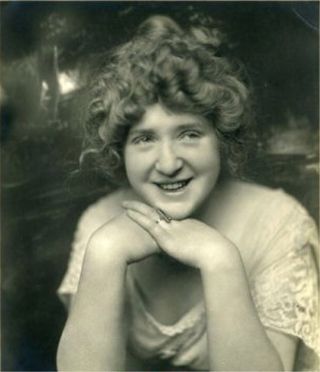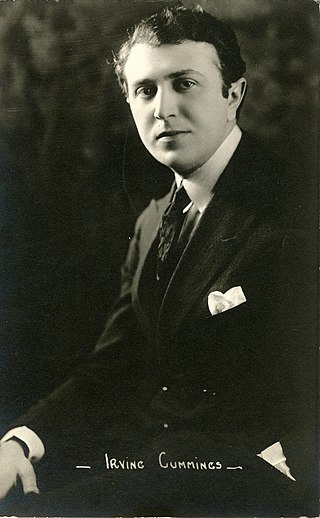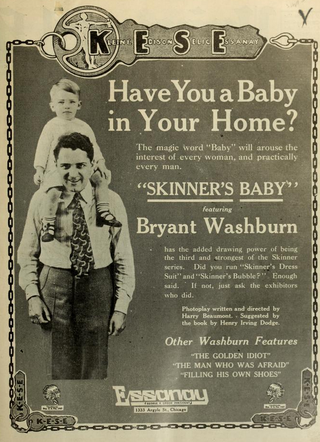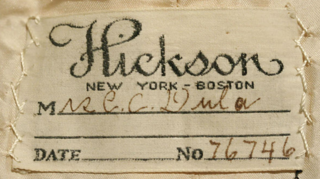
Harry Sinclair Lewis was an American novelist, short-story writer, and playwright. In 1930, he became the first author from the United States to receive the Nobel Prize in Literature, which was awarded "for his vigorous and graphic art of description and his ability to create, with wit and humor, new types of characters." Lewis wrote six popular novels: Main Street (1920), Babbitt (1922), Arrowsmith (1925), Elmer Gantry (1927), Dodsworth (1929), and It Can't Happen Here (1935).

Albert Payson Terhune was an American writer, dog breeder, and journalist. He was popular for his novels relating the adventures of his beloved collies and as a breeder of collies at his Sunnybank Kennels, the lines of which still exist in today's Rough Collies.

Bess Meredyth was a screenwriter and silent film actress. The wife of film director Michael Curtiz, Meredyth wrote The Affairs of Cellini (1934) and adapted The Unsuspected (1947). She was one of the 36 founders of the Academy of Motion Picture Arts and Sciences.

Henry Arthur Barrows was an American actor who appeared in films from 1913 to 1936.

Harold MacGrath was a bestselling and prolific American novelist, short story writer, and screenwriter. He sometimes completed more than one novel per year for the mass market, covering romance, spies, mystery, and adventure.

Irving Cummings was an American movie actor and director.

George Periolat was an American actor.

Niles Eugene Welch was an American performer on Broadway, and a leading man in a number of silent and early talking motion pictures from the early 1910s through the 1930s.

Beatrice Van was an American silent film actress. She was also a screenwriter for both silent and sound films.

Harry Beaumont was an American film director, actor, and screenwriter. He worked for a variety of production companies including Fox, Goldwyn, Metro, Warner Brothers, and Metro-Goldwyn-Mayer.

William Nigh, born Emil Kreuske, was an American film director, writer, and actor. His film work sometimes lists him as either "Will Nigh" or "William Nye".

Fashion from 1910 to 1919 in the Western world was characterized by a rich and exotic opulence in the first half of the decade in contrast with the somber practicality of garments worn during the Great War. Men's trousers were worn cuffed to ankle-length and creased. Skirts rose from floor length to well above the ankle, women began to bob their hair, and the stage was set for the radical new fashions associated with the Jazz Age of the 1920s.

Franklin Bryant Washburn III was an American film actor who appeared in more than 370 films between 1911 and 1947. Washburn's parents were Franklin Bryant Washburn II and Metha Catherine Johnson Washburn. He attended Lake View High School in Chicago.

Harry Dunkinson was an American film and stage actor. He appeared in more than 140 films between 1912 and 1935. He was born in New York City and died in California.

George Henry Irving was an American film actor and director.

Skinner's Dress Suit is a 1926 American silent comedy film produced and distributed by Universal Pictures and starring Reginald Denny. William Seiter was the director of the film which was based on the 1916 novel of the name by Henry Irving Dodge. Laura La Plante and Hedda Hopper co-star in this comedy which has seen video and DVD releases.

Skinner's Baby is a 1917 American silent comedy film starring Bryant Washburn, Hazel Daly, James C. Carroll, and U.K. Haupt. This film projected Washburn out of obscurity; it was quite a success. It was Jackie Coogan's first film role, as the baby, though uncredited. The film is believed to be lost.

Skinner's Dress Suit is a 1917 American silent comedy film directed by Harry Beaumont and starring Bryant Washburn, Hazel Daly and Harry Dunkinson. It is based on the short story Skinner's Dress Suit by Henry Irving Dodge, which was again adapted into a silent film of the same title in 1926.

Hickson Inc. was a high-class fashion retailer, designer, and department store in New York City in the early decades of the twentieth century. The firm started as a men's tailor but evolved to be what the designer Howard Greer described as "the most elegant and expensive specialty shop on Fifth Avenue."

The Anti-Yellow Dog Clubs were American anti-seditionist clubs during World War I. Inspired by Henry Irving Dodge's story "The Yellow Dog" which first appeared in The Saturday Evening Post on March 4, 1918. Members of these clubs wielded the story's definition on their quest to confront "yellow dogs". There were thousands of these clubs across the US, and they were the target of both support and scorn. The clubs were endorsed by political figures including Theodore Roosevelt. They were promoted in concert with at first the book edition of the story and later its movie adaptation.




















